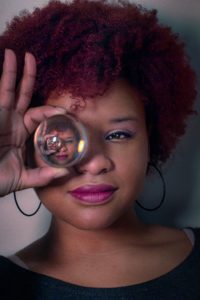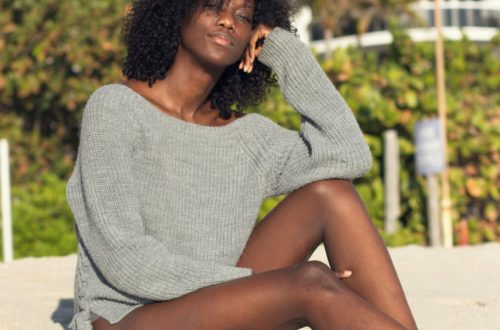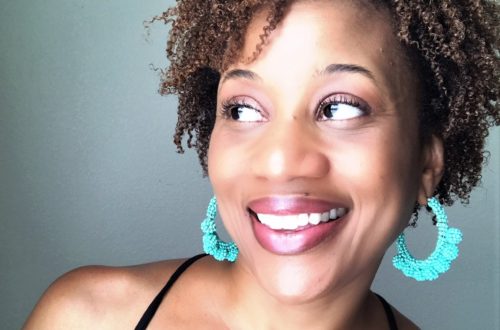
Alcohols in Hair Care: Friend or Foe?
Intentional hair care is always the goal when it comes to selecting products and incorporating practices that will help your hair flourish. We’ve all read products labels and looked for key words when determining what we are willing to put in our hair, but does the one size fits all rule apply to all ingredients? How are you determining what passes the test?
Alcohols in hair care can sometimes be seen as a 4-letter word. Some hair care rules will have you canceling everything in your product arsenal all in the name of avoiding alcohols. Before you throw out your favorite products, let’s take a closer look at alcohols in general and how to determine what might be right for you.
Short chain alcohols

When it comes to healthy hair care and preserving the moisture in your strands, all alcohols are not created equal. The ingredients that tend to be less favorable and have everyone abandoning all products that have alcohol in them are your short chain alcohols.
Short chain alcohols, as the name suggests, have a shorter chemical formula compared to long chain alcohols. These ingredients were initially thought to be favorable because they help to speed up the drying process after cleansing the hair. The drawback is, that these ingredients are so good at drawing out moisture that they tend to leave your hair dull, dry, frizzy, and brittle.
Couple that with the fact that with the fact that curly girls already have a slight challenge retaining moisture, and you could see how theses ingredients quickly fell on the do not touch list. Some of the most common short chain alcohols found in hair products include:
- denatured alcohol
- Ethanol
- isopropyl alcohol
- propanol
- propyl alcohol
- SD alcohol
- SD alcohol 40
Fatty alcohols
Fatty alcohols are long chain alcohols (this means that the chemical formula that makes up the alcohol is long) that are typically derived from plant and animal fats. They are usually found in shampoos, conditioners and stylers and typically serve as, surfactants – foam boosters, emollients, emulsion stabilizers, opacifying agents, and viscosity increasing agents. Some of the most common fatty alcohols found in hair products include:
- Behenyl alcohol
- Cetearyl alcohol
- Cetyl alcohol
- Myristly alcohol
- Oleyl alcohol
- Stearyl alcohol
These items are typically considered favorable for several reasons They create an environment that allows oil and water to mix evenly which is a necessity for most hair products. As surfactants, while they may not have the best cleansing power, they do help to enhance the lather of your cleansers. They also help to give the thick consistency that most of us love in our conditioners and allow products to spread evenly throughout the hair, reducing friction between the hair strands.
To find out more about these multifunctional ingredients and their uses, view the chart below. I have also included and other names that these agents may go by incase they show up on the products you love.
| Fatty Alcohol | Use in hair care | Other Names |
| Behenyl alcohol | binder, emulsion stabilizer, viscosity increasing agent | 1-DOCOSANOL, 1DOCOSANOL, BEHENYL ALCOHOL, and DOCOSAN-1-OL |
| Cetearyl alcohol | emulsion stabilizer, opacifying agent, surfactant – foam booster, viscosity increasing agent | (C16-C18) ALKYL ALCOHOL; (C16-C18)-ALKYL ALCOHOL, 1-OCTADECANOL, MIXT. WITH 1-HEXADECANOL, ALCOHOLS, C16-18, ALCOHOLS, C1618, C16-18 ALCOHOLS, CETEARYL ALCOHOL, CETOSTEARYL ALCOHOL, CETYL/STEARYL ALCOHOL, MIXT. WITH 1-HEXADECANOL 1-OCTADECANOL, and UNIOX A |
| Cetyl alcohol | emulsion stabilizer, opacifying agent, surfactant – foam booster, viscosity increasing agent | 1-HEXADECANOL, CETANOL, CETYL ALCOHOL, HEXADECAN-1-OL, N-HEXADECYL ALCOHOL, and PALMITYL ALCOHOL |
| Myristly alcohol | emulsion stabilizer, fragrance ingredient, skin-conditioning agent – emollient, surfactant -foam booster, viscosity increasing agent | 1-HYDROXYTETRADECANE, 1-TETRADECANOL, MYRISTYL ALCOHOL, TETRADECANOL, and TETRADECYL ALCOHOL |
| Oleyl alcohol | fragrance ingredient, skin-conditioning agent – emollient, solvent, viscosity increasing and opacifying agent | (Z)-OCTADEC-9-ENOL, 9-OCTADECEN-1-OL, 9-OCTADECEN-1-OL, (9Z)-, 9OCTADECEN1OL, (Z), CIS-9-OCTADECENYL ALCOHOL, HYDROXYOCTADEC-9-ENE, OLEIC ALCOHOL, and OLEYL ALCOHOL |
| Stearyl alcohol | emulsion stabilizer, fragrance ingredient, surfactant – emulsifying agent | 1-OCTADECANOL, OCTADECAN-1-OL, and STEARYL ALCOHOL |
Alcohols and their place in hair care
Alcohols can be found in several different products from gels and dyes to cleansers and conditioners. While some may be more beneficial than others, you should always take into consideration the key factors of your hair and your hair care needs to ensure you choose a product that is right for you.
It is hard to know every little thing about every single ingredient that is in the products you love. For many of us, I can understand why this is import and for others, I definitely see how all of this information can cause serious mental over load. Before you tune it all out or throw your hands up in despair, remember that you don’t have to tackle this all on your own.
At Bold Kulture Beauty, it is our mission to empower you with the tools and knowledge needed to be successful on your healthy hair journey.
Visit us today to strike up a curly conversation and to learn more about stress-free healthy hair care and how we can help you on your natural hair journey.
References:




